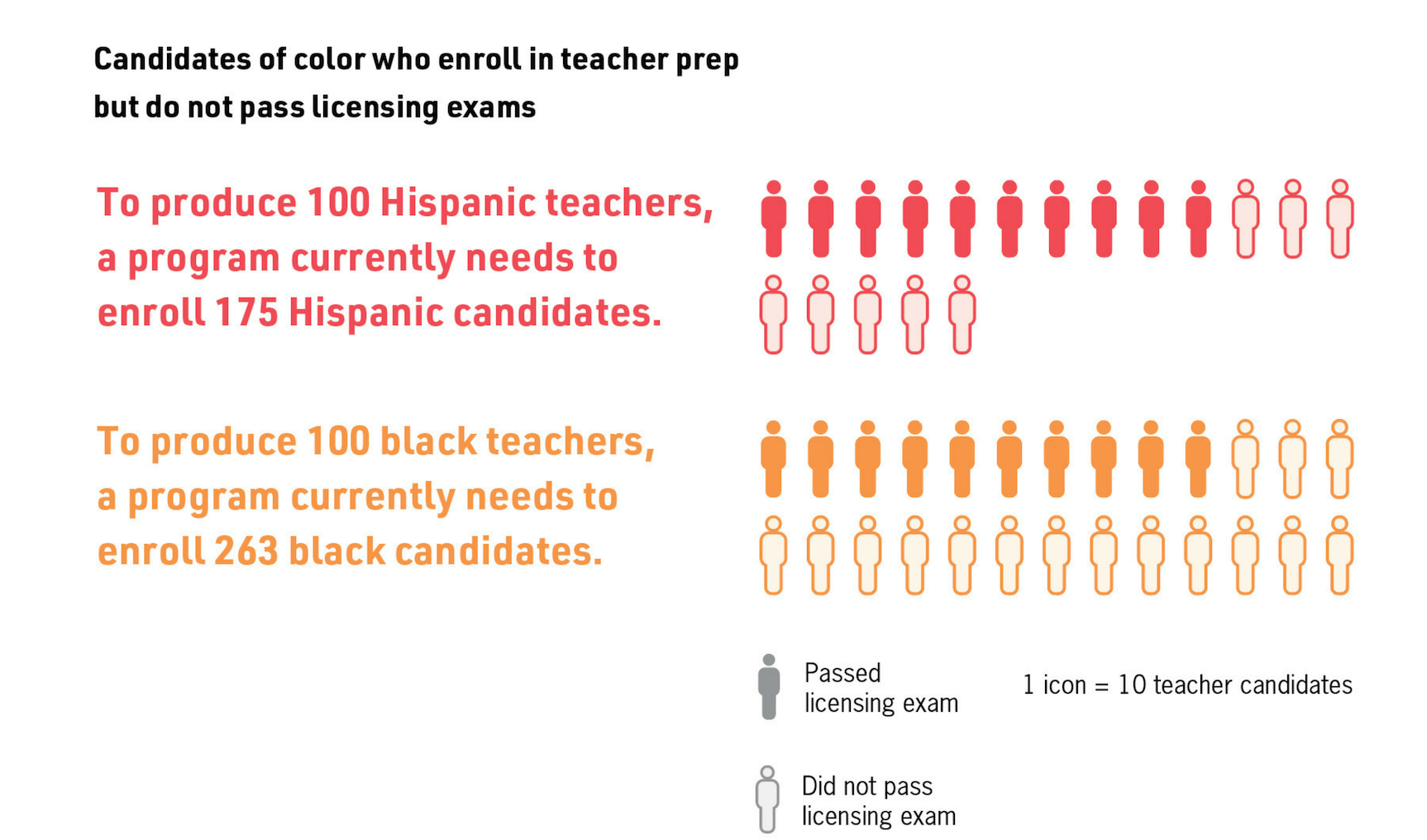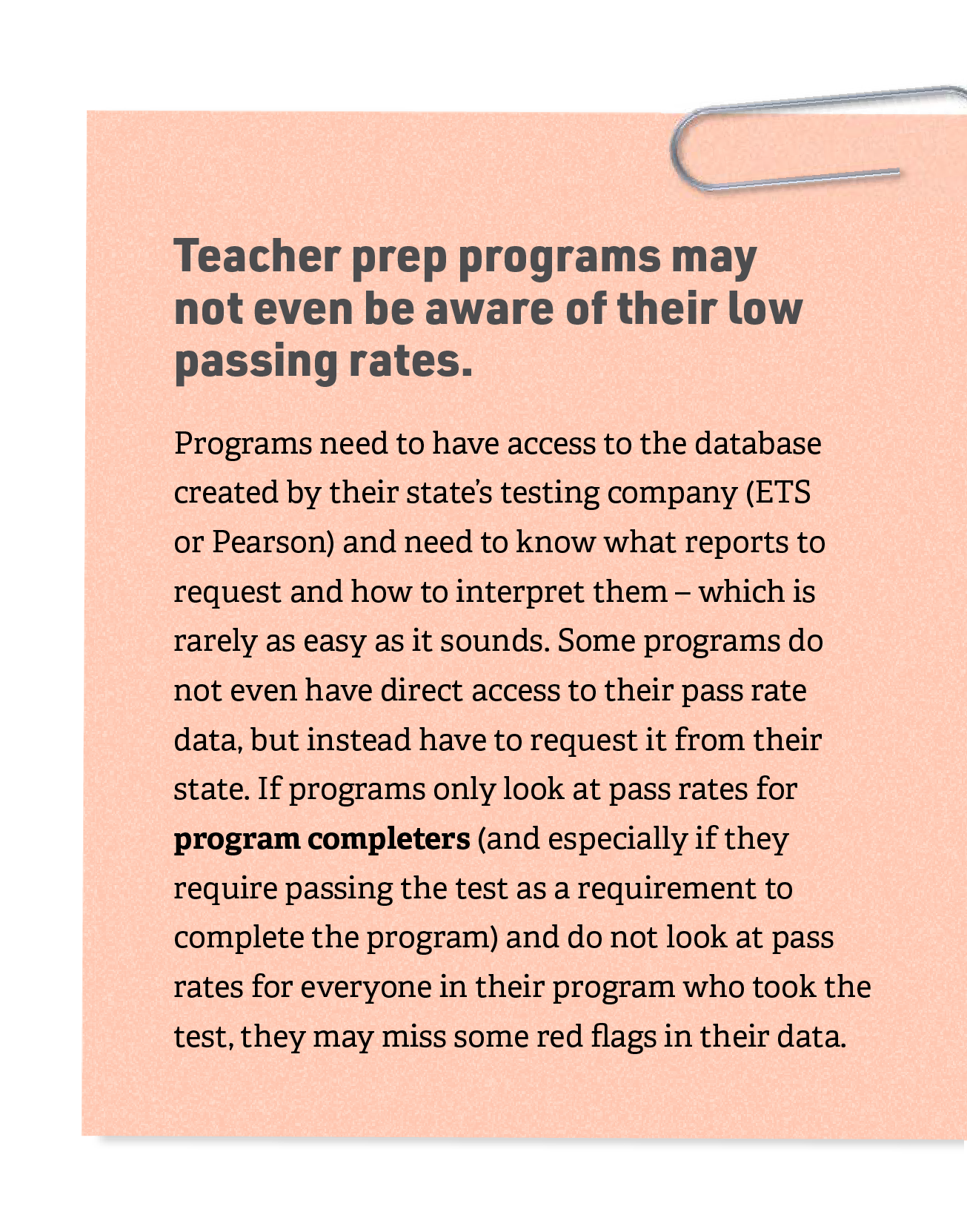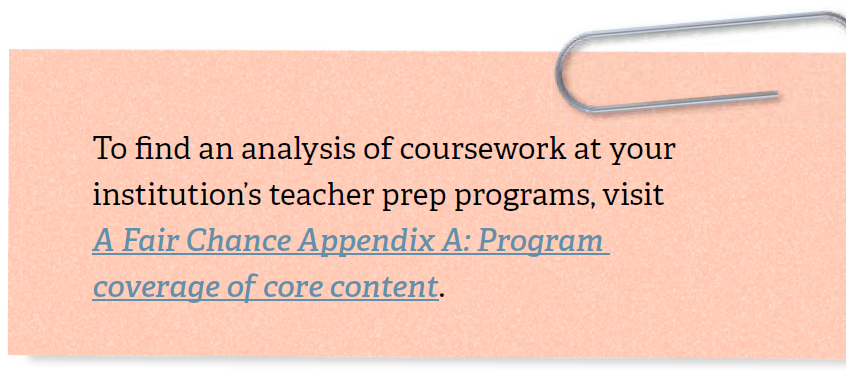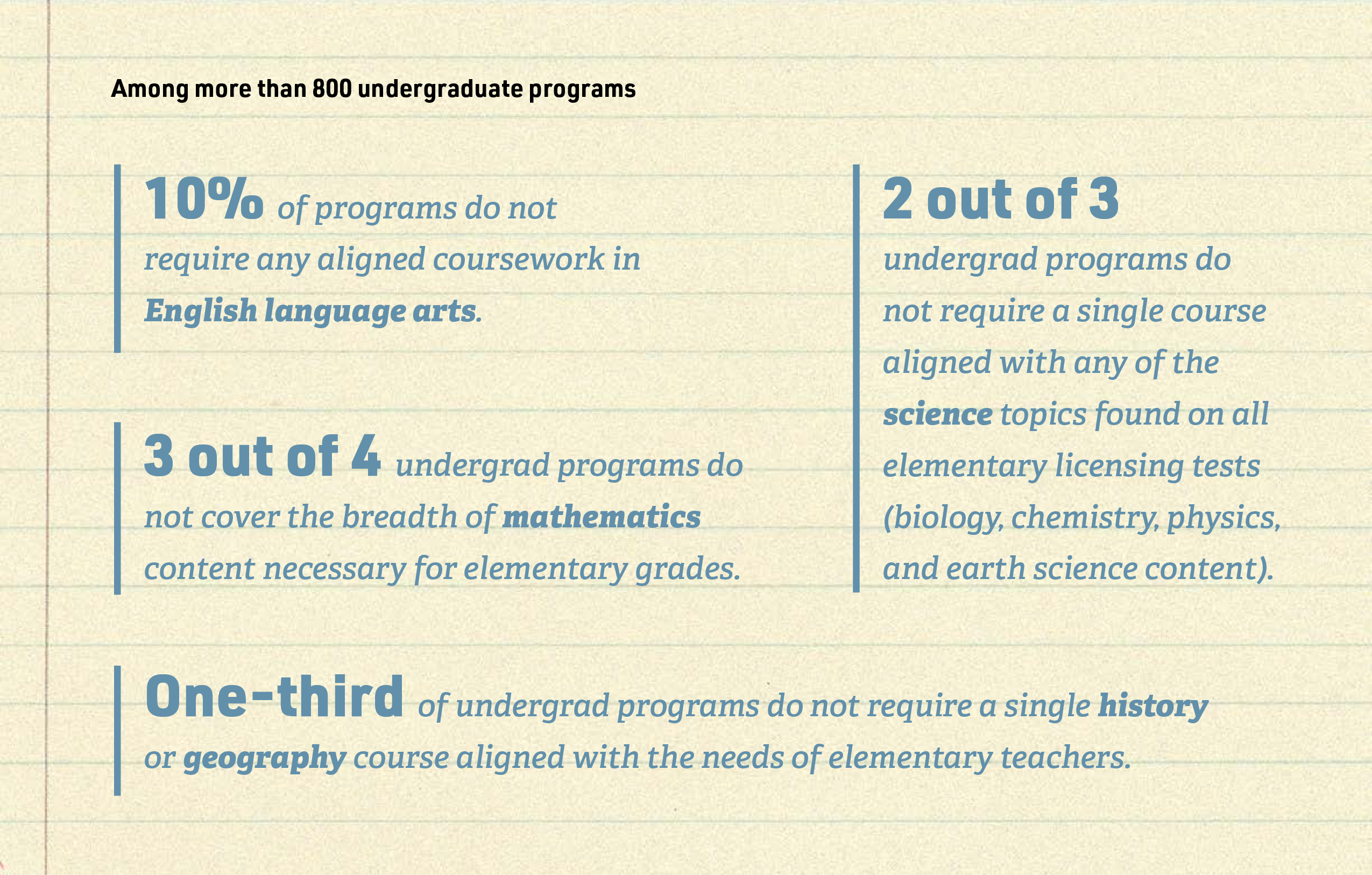A Fair Chance: Simple steps to strengthen and diversify the teacher workforce
Why this Action Guide?
As you dig into this Action Guide, ask yourself:
- Do a large number of your elementary teacher candidates routinely fail your state's content licensure exam the first time they take it?
- Do your elementary candidates struggle with math anxiety?
- Does your program have to invest resources into test preparation and support?
If you answered "yes" to some or all of these questions, you are not alone. You are facing a systemic challenge shared by programs nationwide.
Of these challenges, building a more diverse teacher workforce may be one of the most complicated –and most important to remedy. Programs are taking many steps to prepare more teachers of color, from active recruitment to providing ongoing support and mentoring. But there's one approach that has gotten too little attention: strengthening candidates' content knowledge, which may help them succeed on state licensing tests.
On the most commonly required content licensing test, more teacher candidates fail the test than pass it on their first attempt. It doesn't have to be this way – in other professions, first-time pass rates on professional licensing exams are far higher. For example, 85 percent of nursing candidates pass on their first attempt, as do 69 percent of civil engineers and 89 percent of psychiatrists.i These pass rates are even worse for candidates of color – even allowing for test retakes, only 38 percent of black candidates and 57 percent of Hispanic candidates pass the most commonly required content licensing test.ii This means that many of the candidates of color who enroll in teacher prep programs cannot successfully earn a standard teaching license.


The problem likely stems from a K-12 education that left large gaps in candidates' knowledge of core content – but teacher prep programs, with the help of their institutions, are in the best position to identify and fill these gaps before sending teacher candidates back into the classroom.
While most undergraduate teacher candidates take some content coursework, both through their general education requirements and the requirements of their education major, those courses are not always designed to be aligned with the knowledge that states and districts deem essential for elementary teachers. (For more on the hallmarks of great content coursework for elementary candidates, see below). The problem is even more endemic to graduate programs, which often devote few credits to building core content knowledge and rarely check candidates' content knowledge during the admission process.
The report A Fair Chance: Simple steps to strengthen and diversify the teacher workforce looks at over 1,000 undergraduate, graduate, and alternative route teacher preparation programs and finds many missed opportunities to strengthen teacher candidates' content knowledge.
Graduate programs tend to have fewer content requirements, and no graduate programs in the sample assess candidates' content knowledge at admission into the program. Alternative route programs tend to fare better, largely because most states require candidates to pass a content licensure exam before being admitted into the program.
 This resource guide outlines how programs can take an active role in filling in the gaps in candidates' content knowledge, likely leading to greater success on licensure exams and in the classroom. Programs can consider steps such as specifying which general education courses candidates should take to build baseline content knowledge, assessing candidates' content knowledge when they apply for the program, and requiring relevant content coursework as part of the education program.
This resource guide outlines how programs can take an active role in filling in the gaps in candidates' content knowledge, likely leading to greater success on licensure exams and in the classroom. Programs can consider steps such as specifying which general education courses candidates should take to build baseline content knowledge, assessing candidates' content knowledge when they apply for the program, and requiring relevant content coursework as part of the education program.
i. American Board of Psychiatry and Neurology, Inc. (No Date). Pass rates for first time takers. Retrieved March 28, 2018, from https://www.abpn.com/wp-content/uploads/2016/08/ABPN-Pass-Rates-5-Year-Summary.pdf; Illinois Department of Financial and Professional Regulation. (2018). National Council licensure examination summary data. Retrieved March 4, 2018, from http://nursing.illinois.gov/PDF/IlApNursingEdProgPassRates.PDF; National Council of Examiners for Engineering and Surveying. (2017). PE exam pass rates. Retrieved March 28, 2018, from https://ncees.org/engineering/pe/pass-rates/; Zhang, Y. O. (2006).
ii. Educational Testing Services. (2018). Praxis Elementary Education: Multiple Subjects Passing Rate Summary.
